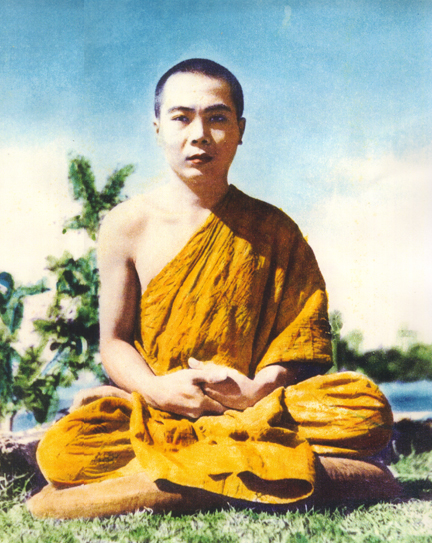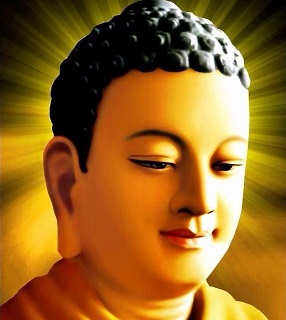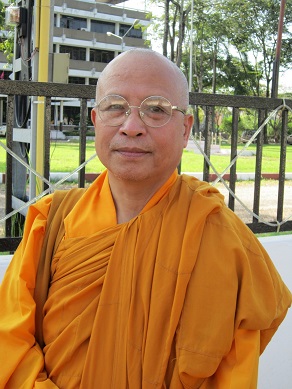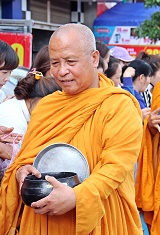Trang nhất » Tin Tức » ENGLISH
VINAYA PITAKA
Chủ nhật - 15/10/2017 12:56The Vinaya Pitaka consists of the following books: (i) sutta vibhanga, (ii) khandhaka, (iii) parivara.
The sutta vibhariga is subdivided into Parajika and Pacittiya.
The sutta vibhanga means the explanations or the expositions of the suttas.
The word ‘sutta’ corresponds to the sanskrit ‘sutra’ which literature means ‘thread’. It is applied to a kind of book, the contents of which are, as it were, a thread, giving a gist or substance of more than is expressed in them in words. This sort of a book is a latest development in vedic literature just before and after the rise of Buddhism. (Rhys Davids, American lecture, Buddhism its history and literature pp. 53-54).
The Buddhists used this word to mean analysis or classification (Vibhanga) of a ‘sutta’, a term here applied to each rule or course of training included in the ‘Patimokkha’.
The word ‘sutta’ in the vinaya does bear the meaning of rule, as suggested in Vinaya texts, is indicated by various passages for example, at Vinaya i 65=68 a monk is not to receive the upasampada ordination if he does not know the two Patimokkkhas ‘rule by rule’ (suttato); at vinaya ii. 68. it is said: This thing is in a rule (suttagata) and comes up for recitation every haft month. The thing (Dhamma) here referred to is not in a sutta, or suttapitaka discourse, but does occur, as part of a course of training, in the vinaya.
As the sutta vibhanga has come down to us, it is divided into two sections: Parajika and Pacittiya.
Between them, these two sections comprise 227 rules divided into eight groups.
4-Parajikas
13-sanghadisesas
2-aniyatas
30-nissaggiya pacitiyas
92-pacitiyas
4-patidesaniyas
75-sekhiyas
7-adhikaranasamatha dhamma.
There is a corresponding Bhikkhuni Vibhaṅga, some times referred to as Bhikkhunivinaya, or discipline for nuns, with its set of Pātimokkha rules.
The Suttavibhaṅga material is usually arranged in a series of four groups: (1) a story leading up to a rule; (2) a Pātimokkha rule; which always states a penalty incurred for breaking it; (3) old commentary, the Padabhājanīya, on each rule defining it wordly word; (4) more stories telling of deviation from the rule, and showing that either that they were not so grave as to entail the maximum penalty, or they were reasonable enough to warrant, in certain circumstances, a modification or a relaxtion of the existing rule, or that they were not such as to rendered permissible by any extenuating circumstances, items (3) and (4) are sometimes reversed in position.
The Pātimokkha rules are the core of Suttavibhanga.
This list of rules or list of courses of training, was recited twice a month on the Uposatha days (abservance, Sabbath, or avowal) held on the nights of the new moon or the full moon days.
In vedic tradition, the ‘Upavasatha’ was a fast day kept for the preparation and performance of the ‘soma sacrifice’.
The Pāli tradition informs us that the Paribbājakas, or wanderers belonging to other sects, also held sacred two days in each month for the recitation of their dhamma (vinaya i. 101). It was in imitation of this popular custom that the Buddhist monks and nuns also assembled on three days which were later on reduced to two (Vinaya i.104) and were devoted to the recitation of the Pātimokkha rules.
This recitation served the double purpose of keeping the rules fresh in the minds of monks and nuns and of giving each member of the monastic community the opportunity, while the rules were being repeated or recited to confess any offences that he or she had committed.
After the confession came the due punishment. In the Suttavibhaṅga, the monk is usually shown as confessing his offence to Buddha, or to one of the monk, or to a group of monks, directly he had committed it, and not as waiting to confess it before the full congregation (saṅgha) of monks. He was thus pure for the Uposatha ceremony and could take his place at the meeting.
Oldenberg sees in the term "Patimokkha"- freedom from sins there named in ie, in the list of rules called Patimokkha .But the monks were not asked whether they were free from the sins there named as oldenberg states -because the word for free or freed would have been "vimutta" .what they were asked was whether they were "Parisuddha" - quite pure or pure in the matter of having kept the rules.But scholars like I.B. horher are of the view that if olderberg had looked upon the Patimokkha as a list of rules or courses of training, and not as a list of those offences which deserved punishment or some kind of expiation, he would not have been so much dominated by the idea of freedom from sins.
This leads us to the ety mological meaning of the term Patimokkha .It is made up from two words Patimokkha. Rhys davids and oldenberg following childers, refer it to Pati - as sanskrit Prati+muc, and mean it in the sense of disburdening or getting free.meaning ther by that Prati -> each individual by confessing his guilt or sin disburdens himself or becomes free from the sin.
Buddhaghosa in visuddhimagga 16, also derives it from sanskrit root "muc", in the sense of being free from the punishment of niraya (hell) and other painful rebirths.
In the Buddhist order a ceremony called uposatha ( stk upavasatha - upavasa or fast ) was being performed on the full moonday and the new moonday .All the monks risiding in the same parish (sima) used to assenble at one place and in the presence of all, a group of minimum four monks used to recite the Patimokkha rules of Parajika, Pacittiya etc (which are being divided into eight catgories as mentioned earlies). As the rules were read out in the assembly, it was expected from the Bhikkhus and Bhikkhunis present there, that if they have committed any sin, they would confessit.
The idea behind it was perhaps ethical, because in the pursuit of moral, mental and spiritual development it is necessary for a person to be pure at heart.So by disclosing and confessing the sin committed, undertaking the punishment and making a firm resolve not to commit it in future was a monk used to disburden and free him self from the guilt of the sin and become pure in heart and resume his future activities.
Since this practice wasCarried out individually each monk therefore, in the word ‘patimokha’ each can be taken to mean that each individual or monk was being freed or being disburdense from sin himself.
At the same time each monk(pati, skt, prati-each) is confessing the sin from his own mouth (mokkha- mukkha mouth). Hence it can be interprected as “each monk confessing his sin from his mouth and at the same time each being recleived or freed from the sin and becoming ‘pure’.
The Chinese and Tibetan translations of vinaya and also the vinaya available of other Buddhist sects like sarvastivada have also taken the term to mean this only.*
Rhys Davids and Stede in “Pali English Dictionary” say that: it has the sense of binding, obligatory, obligation and that the sanskrit adaptation of the Pa2li shoud be ‘pratimoksya’. That which should be made binding and not ‘pratimoksa’ in the sense of individual disburdening from the sin.
DR.E.J Thoma also agrees with the definition given is P.E.D to mean ‘to fasten or bind on (as armour) and thus should mean ‘that which binds or obligatory’.
In the Mahavagga of vinaya Pitakait has been staoted for _’Partimokkha ti Adimetam mukhanmetam kusalanam dhammanam tena vuccati patimokkhamti’. i.e, patimokkha is the forerunner or it precedes all the kusaladhammas, it is the chief of all the kusaladhammas. This exhists the a place which patimokkha occupies in the vinaya or the rules of discipline.
The question of the composition of the patimokkha rules is one, which is of greater interest. this question has two sides to it: that of ‘when’ and that of ‘how’ the rules came to be formulated.
The rules were either drawn up in their entirety in the Buddha’s life time; or they were drawn up in their entirety after hismahaparinibanna; or some were drawn up during his life time and others afterwards. The last assumption is that most generally favoured by scholars because they believe “additions and modifications,’ repititions and inconsistencies, existing among the collection of rules!
Again if it were held that the rules were codified into their present after buddha’s parinabbana, this would not mean that they were not known and enforced during his ministry.
- It is conceivable that not one of the Patimokha rules was framed until someone, lay followers or the more reliable monks or nuns, had seen, heard or suspected a mode of behaviour which seemed to them unfitting or not correct in member of one of the Buddha’s orders.
- Each rule is therefore very possibly the direct result of some actual event and was not made with merely hypothetical cases of wrong doing in mind.
- On detecting, even on suspecting, that conduct unfitting in a recluse, unworthy of a monk, the action was reported, as it is almost invariably stated, to the Buddha, eiher by the errant monk himself or by those vigilant in the interests of the order.
- The Suttabibhanga shows that if the actions were found to be blame worthy, a course of training was set forth, a penalty was attached, and it henceforth became manifest that a breach of each rule of right conduct would incur a penalty (punishment) like this.
- Prevention of unsuitable behaviour in monks and nuns seems to have rested on two bases. In the first place, the presumption that a certain line of conduct had been forbidden by the Buddha, appealed to the purer mind and more zealous monks. Secondly, the penalty fixed commensurably with the breach of the rule, would no doubt serve as a deterrent over the behaviour of those monks who were not prepared to the dictates of loftier motives.
- Although the framing of each major rule is without exception attributed to the Buddha, it has never been suggested that at the beginning of the order he though over all the possible cases of wrong doing and depravity, of which the monks might be capable and propounded a ready made body of rules to meet any conceivable contingency.
- It is, however, more likely that the majority of rules grew up gradually, as the need arose, and are the out come of historical development that went on with in the order. But it is difficult to trace the historical order in which the rules were formulated.
Again, it is questionable whether all the offeneces, grave and betty, all the cases of illness which prevented a rule from being carried out, all the multifarious detail of the community life were reported to the Buddha , who then pronounced his verdict, and either framed a new rule or altered an existing one.
The rules are no doubt ascribed to him so as to give them weight, but in what proportion he was the author it is difficult to know.
We know from the literature that some of his disciples were competent to preach “Dhamma”, so some would also have been competent to meet a case of wrong doing by admonishment and rebuke, or by enforcing an appropriate penalty as a safeguard for future.
In the sutta Vibhanga although greater no of rules is said to have been enunciated by the Buddha himself but many a sub rule were laid down without refrence to the founder.
This absence of refrence is an indication that either some tramsgressions occured and legislated for affter the parihibb
āna of Buddha , or even while he was still alive it was not thought hecessary to trouble him as the issnes were considered of little importance and bound to arise in an orgainisation of monks and nuns.
The monks of the order were recognised to be at varying stages of spiritual development, and because their behaviour was not viewed solely as it affected internal community, but also as it affected the laity.
The contribation of laity could not be denied as they perpetually enter into the life of the order as supporters, critics, donors etc. Which shows that they were deeply anxious for its success.
Thus , the Vinaya does not merely lay down sets of rules only for their own internal community but they were formulated in such a way as to allow and even to encourage a certain degree of inter communication with the lay supporters and followers, and even those lay people who were not adherents of faith.
What was considered importcut was that the monks should neither abuse their dependebce on the former nor alienate them, but should so regulate their lives as to give no cause for complaint with these aims in view, the conduct which was not thought appropriate for them to indulge in had to carefully defined, and it became drafted in rule and precept.
The Patimokkha rules of Palivinaya fall into eight sections, classified according to the gravity of the offence committed. The first and the most important ones are the four Parajika rules, framed to govern those offences, the most serious of all, which involve defeat and whose penalty is expulsion from the order.
The first three Parajika rules are leveled against the breach of a code of morality generally recognized and active among all civilized communities: (i) against unchastity (ii) against the taking of what was not given and (iii) against the depriving of life.
Evidently, the aim of the strictures on unchastity, with which Parajika I is concerned was partly to bring the monks into line with members, having renounced the household state had to be celibate.
This notion was already prevalent by the time the Buddhist order of the monks came into being. It was a notion based as much on common sense as on the conviction that restraint and self taming were indispensable factors in the winning of the fruit of a monk’s life.
It is of course not believable that each or any of the many and curious form of unchastity, mentioned in Parajika I ever was actually committed by a monk. Such comprehensive treatment as is found is not needed either to support or to elucidate the meaning of the general rule.
It is possible of course that some of the faults did occur while others did not it is difficult to say. It is also possible that at the time of final recension each rule was minutely scrutinized and analysed and all the deviations from it of which the recensionists had heard or which they could imagine were formulated and added in some kind of order.
So that in future there would be no doubt of the class of offence (e.g Parajika, thullaccaya or dukkata) to which any wrong behaviour that had been or should be committed or belonged or of what was the statutory penalty for that offence.
The smooth and detailed handling of some parts of the other Parajika rules and some of the Sanghadisesa rules, like wise suggests that these are the outcome not of events so much but of lengthy and anxious deliberations. The recensionists had a responsible task. They were framing the rule for the future and for that reason only they were so minute in defining it, the offence already stated in a general way in each major rule.
Tác giả bài viết: Internet
Những tin mới hơn
•Tin Được Quan Tâm Nhiều
-
 Nhóm Thiện Nguyện Tịnh xá Ngọc Sơn ủng hộ từ thiện nhân mùa Phật Đản tại Ấn Độ.
Nhóm Thiện Nguyện Tịnh xá Ngọc Sơn ủng hộ từ thiện nhân mùa Phật Đản tại Ấn Độ.
Bố thí là nền tảng cơ bản để kết nối yêu thương, sẻ chia cuộc sống nhằm làm vơi bớt nỗi đau bất hạnh... -
 KHÓA TU MỘT NGÀY CHÁNH NIỆM NIỆM PHẬT TẠI TỊNH XÁ NGỌC SƠN.
KHÓA TU MỘT NGÀY CHÁNH NIỆM NIỆM PHẬT TẠI TỊNH XÁ NGỌC SƠN.
Vào lúc 8 giờ sáng ngày 21/10/2017 (nhằm ngày 2/9/ Đinh Dậu), khóa tu một ngày Chánh Niệm Niệm Phật... -
 Bữa cơm chuyển nghiệp lần 5
Bữa cơm chuyển nghiệp lần 5
Sáng ngày 12/10/2017 ( Nhằm ngày 23/8/ Đinh Dậu), chư tăng và Phật tử Tịnh xá Ngọc Sơn đã thân lâm... -
 Phát quà trung thu và trao học bổng cho các cháu thiếu nhi
Phát quà trung thu và trao học bổng cho các cháu thiếu nhi
Tết Trung thu là một trong những lễ hội truyền thống có ý nghĩa quan trọng trong đời sống văn hóa... -
 Chương trình đón mừng đại lễ Phật Đản PL. 2560 tại Tịnh xá Ngọc Sơn
Chương trình đón mừng đại lễ Phật Đản PL. 2560 tại Tịnh xá Ngọc Sơn
Vào lúc 18 giờ ngày 14/4/ Bính Thân, dưới sự chứng minh của TT. Giác Trí cùng chư tôn Đức Tăng, Ni,... -
 Đại lễ Khánh thành bảo tháp Xá lợi Phật - Tịnh xá Ngọc Sơn
Đại lễ Khánh thành bảo tháp Xá lợi Phật - Tịnh xá Ngọc Sơn
Sáng ngày 7.4.2016 (01.3. Bính Thân) Tịnh xá Ngọc Sơn, xã Phước Sơn, huyện Tuy Phước, tỉnh Bình Định... -
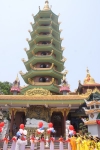 Công trình Bảo tháp xá-lợi ở TX. Ngọc Sơn
Công trình Bảo tháp xá-lợi ở TX. Ngọc Sơn
Nhằm tạo điều kiện cho mọi người không đủ phước duyên đến các nước để chiêm bái xá-lợi, Thượng tọa... -
 Lễ khánh thành bảo tháp thờ xá lợi Phật tại Tịnh xá Ngọc Sơn
Lễ khánh thành bảo tháp thờ xá lợi Phật tại Tịnh xá Ngọc Sơn
Ngày 7/4/1016 (nhằm ngày 01/3 năm Bính Thân), PL. 2559 tại Tịnh xá Ngọc Sơn, xã Phước Sơn, huyện Tuy...
•Tập San Đuốc Sen
-
 Nhóm Thiện Nguyện Tịnh xá Ngọc Sơn ủng hộ từ thiện nhân mùa Phật Đản tại Ấn Độ.
Nhóm Thiện Nguyện Tịnh xá Ngọc Sơn ủng hộ từ thiện nhân mùa Phật Đản tại Ấn Độ.
Bố thí là nền tảng cơ bản để kết nối yêu thương, sẻ chia cuộc sống nhằm làm vơi bớt nỗi đau bất hạnh... -
 KHÓA TU MỘT NGÀY CHÁNH NIỆM NIỆM PHẬT TẠI TỊNH XÁ NGỌC SƠN.
KHÓA TU MỘT NGÀY CHÁNH NIỆM NIỆM PHẬT TẠI TỊNH XÁ NGỌC SƠN.
Vào lúc 8 giờ sáng ngày 21/10/2017 (nhằm ngày 2/9/ Đinh Dậu), khóa tu một ngày Chánh Niệm Niệm Phật... -
 Bữa cơm chuyển nghiệp lần 5
Bữa cơm chuyển nghiệp lần 5
Sáng ngày 12/10/2017 ( Nhằm ngày 23/8/ Đinh Dậu), chư tăng và Phật tử Tịnh xá Ngọc Sơn đã thân lâm... -
 Phát quà trung thu và trao học bổng cho các cháu thiếu nhi
Phát quà trung thu và trao học bổng cho các cháu thiếu nhi
Tết Trung thu là một trong những lễ hội truyền thống có ý nghĩa quan trọng trong đời sống văn hóa... -
 Chương trình đón mừng đại lễ Phật Đản PL. 2560 tại Tịnh xá Ngọc Sơn
Chương trình đón mừng đại lễ Phật Đản PL. 2560 tại Tịnh xá Ngọc Sơn
Vào lúc 18 giờ ngày 14/4/ Bính Thân, dưới sự chứng minh của TT. Giác Trí cùng chư tôn Đức Tăng, Ni,... -
 Đại lễ Khánh thành bảo tháp Xá lợi Phật - Tịnh xá Ngọc Sơn
Đại lễ Khánh thành bảo tháp Xá lợi Phật - Tịnh xá Ngọc Sơn
Sáng ngày 7.4.2016 (01.3. Bính Thân) Tịnh xá Ngọc Sơn, xã Phước Sơn, huyện Tuy Phước, tỉnh Bình Định... -
 Công trình Bảo tháp xá-lợi ở TX. Ngọc Sơn
Công trình Bảo tháp xá-lợi ở TX. Ngọc Sơn
Nhằm tạo điều kiện cho mọi người không đủ phước duyên đến các nước để chiêm bái xá-lợi, Thượng tọa...
•Chia Sẻ Cùng Bạn Đọc
-
 Văn cảm tưởng về Thầy nhân mùa Vu Lan Báo Hiếu
Văn cảm tưởng về Thầy nhân mùa Vu Lan Báo Hiếu
Hôm nay nhân mùa Vu lan báo hiếu, Thầy cho chúng con được dâng lên lời cảm niệm này, thành kính cúng... -
 CLB Tình nguyện Sen Hồng sinh hoạt buổi đầu tiên
CLB Tình nguyện Sen Hồng sinh hoạt buổi đầu tiên
Ngày 17/4/2016, dưới sự chứng minh của HT. Giác Pháp - Chủ nhiệm Câu lạc bộ Tình nguyện Sen Hồng,... -
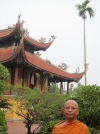 Ông Bụt của tôi
Ông Bụt của tôi
-
 Giá trị của công việc
Giá trị của công việc
Một chàng trai trẻ vừa tốt nghiệp Đại học loại xuất sắc nộp đơn dự tuyển vào vị trí quản lý cấp thấp... -
 Giá trị của cuộc sống
Giá trị của cuộc sống
Cuộc sống luôn 'nói chuyện' với ta qua những điều giản dị và không ngờ đến nhất.
•Hình Ảnh Tịnh Xá Ngọc Sơn
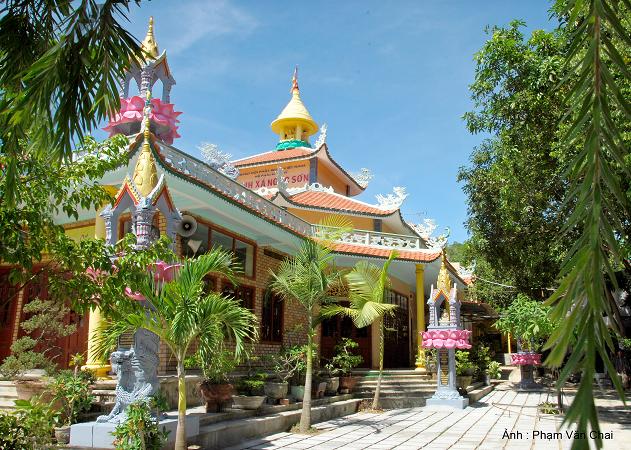 |
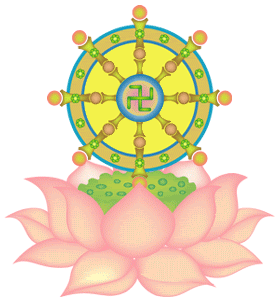 |

 Xem phản hồi
Xem phản hồi Gửi phản hồi
Gửi phản hồi